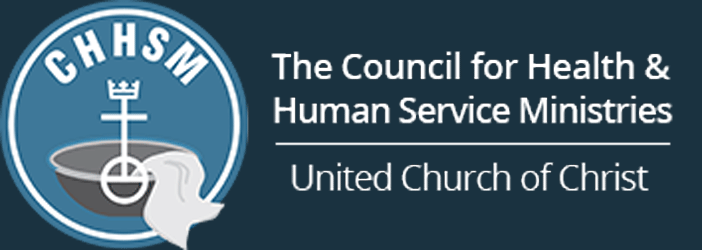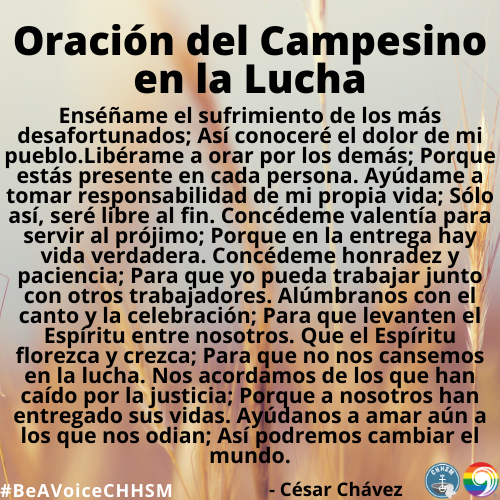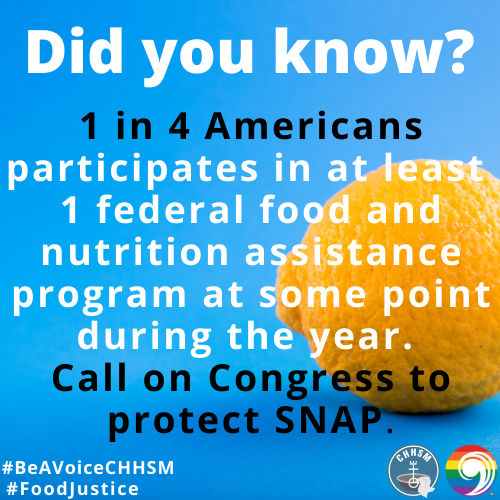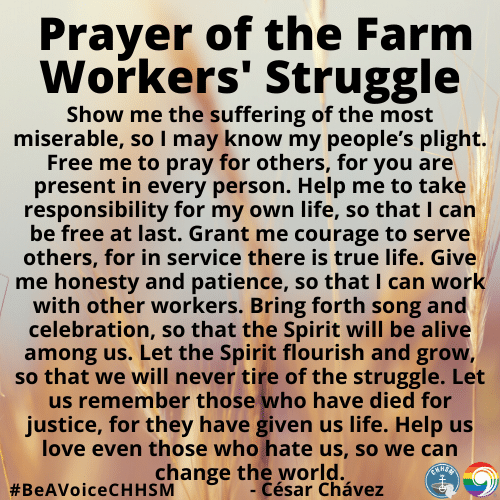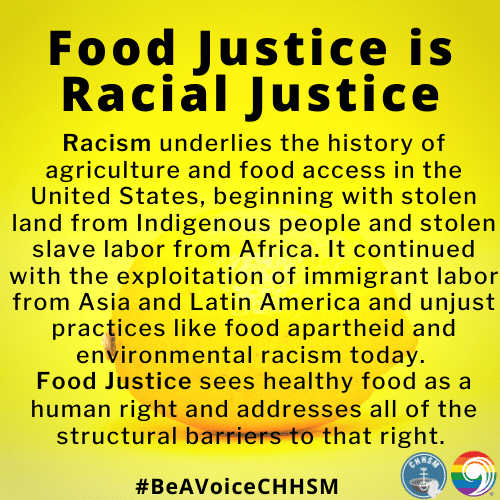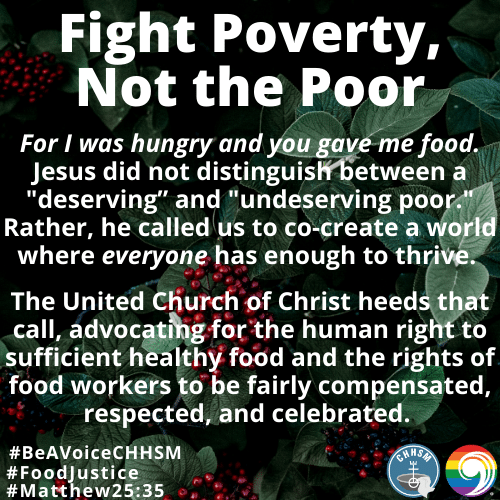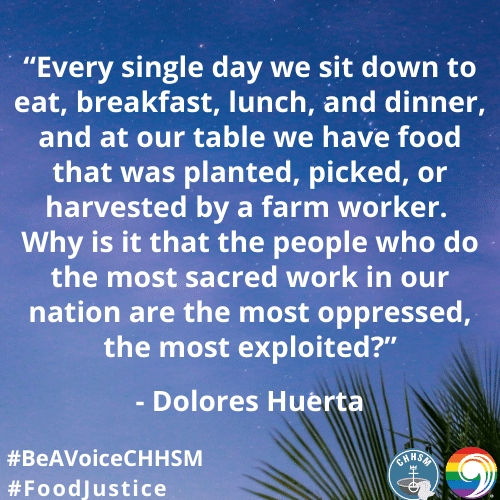CHHSM Advocacy Center
Vol. 6: Food Insecurity
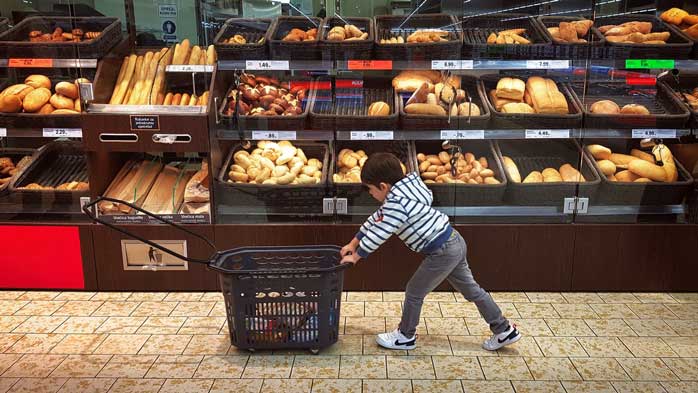
Jim's Story
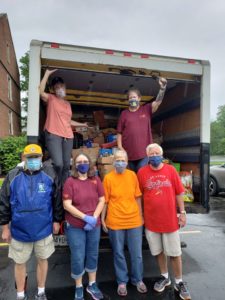
Executive Director Rev. Brenda Booth with volunteers from Southminster Presbyterian Church transferring food to the food pantry.
“I think about y’all every day. You are like family to me, and y’all lift my spirits, and make me smile,” says Jim*, who has been coming to Isaiah 58 Ministries, a CHHSM member organization in St. Louis, MO, for many years. Affectionately known as “Chocolate Cake” because of his love for chocolate, Jim is always ready to lend a hand wherever needed and walks in the door with a smile on his face. Last December, he had back surgery and has not been able to return since then. Yet he calls regularly and was recently brought in by a friend to visit. He expressed how much he misses everyone and “being able to be part of this community.” Executive Director Rev. Brenda Booth says it is people like Jim who help to make Isaiah 58 Ministries such an incredible place of connection and ministry: “Isaiah 58 Ministries is a place of safety, service, and perhaps most importantly, community. It is a place where people come to be fed, both physically and spiritually. It is, in my perspective, what church is meant to be–people from all walks of life, working together to improve the lives of one another, regardless of background and personal history, regardless of socio-economic status, regardless of skin color or education level. It is everyone working together towards a common goal.”
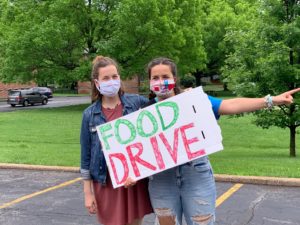
Volunteers from Eden Theological Seminary participating in a food drive.
The organization distributes food to 700-900 families each month through a variety of food ministries. Most of the food is donated by their 40+ supporting congregations, as well as other organizations like Operation Food Search, which partners food pantries with local grocery stores to receive fresh produce. Food that would otherwise end up in landfills is able to reach individuals and families who may go hungry or have limited means to obtain nutrient-rich food. And it is not just a few fruits and vegetables that people receive at Isaiah 58 Ministries. Each time an individual shops at their fresh food distribution, they can leave with over $100 of quality, nutrient rich food; and if they shop weekly, that averages to over $400 a month in groceries. The organization also provides several other direct services, such as access to clothing and school supplies, utility assistance, educational programs, and nursing services in partnership with Deaconess Nurse Ministry, another CHHSM member organization.
Booth notes the current and pressing need for both governmental and emergency food services to meet the needs of people experiencing food insecurity. “While many receive SNAP [Supplemental Nutrition Assistance Program], very seldom is it enough to provide nutrient rich food for the entire month. And there are others receiving very little in support, or none at all, who would go hungry without our help. We make the difference between whether a child goes to bed hungry at night or with a full tummy.” She advocates for increased funding to governmental food assistance programs as well as broader guidelines for who is eligible, particularly for older adults who often become food insecure because they do not qualify for such programs if they live alone. “It is our responsibility to speak up for ‘the least of these,’ to write to our local and state officials to let them know the importance of their support around food programs such as SNAP, WIC and school food programs.”
* The name of this individual has been changed to protect their identity. To learn more about Isaiah 58 Ministries, please visit i58ministries.org.
Definitions
Particularly coming from a social justice perspective, discussing food insecurity requires important distinctions in the language often used and understanding the broad range of issues involved. To provide a foundation for this conversation, below are some helpful definitions from a variety of sources committed to this work.
- Food Justice: A holistic and structural view of the food system that sees healthy food as a human right and addresses structural barriers to that right. The movement draws in part on environmental justice, which emerged in the 1980s as a critique of how environmentalism became more mainstream as it became more elite, more white, and more focused on wilderness and scenery than on human communities vulnerable to pollution (the effects of which are at once disparate and racialized). Food justice efforts, which are generally led by Indigenous Peoples and People of Color, work not only for access to healthy food, but for an end to the structural inequities that lead to unequal health outcomes. In many cases, environmental and food justice intersect. For example, numerous factory farms and meatpacking plants, which pollute neighboring communities’ water and air,are situated predominantly in communities of color. Food Justice is also deeply rooted in healing and reclaiming culture, land, and agricultural practices as part of its revolutionary work. Organizations such as Soul Fire Farm, The Okra Project, the Land Loss Prevention Project, the Detroit Black Community Food Security Network, and the Native American Food Sovereignty Alliance are just a few examples of these values brought to life.
- Environmental Racism: the disproportionate impact of environmental hazards on People of Color. Environmental Racism refers to the institutional rules, regulations, policies, and governmental and corporate decisions that deliberately target certain communities for locally undesirable land uses and lax enforcement of zoning and environmental laws, which result in disproportionate exposure to toxic and hazardous waste in communities of color and low-income communities. The term was coined by Rev. Benjamin Chavis, Jr., former Executive Director of the United Church of Christ Commission for Racial Justice. To learn more about the UCC’s landmark 1987 report Toxic Wastes and Race in the United States and their pivotal role in the environmental justice movement, click here.
- Food Security: Access at all times to enough food for an active, healthy life; the availability of nutritional, culturally-appropriate, and safe foods and the ability to acquire food without resorting to emergency food supplies, scavenging, stealing, or other coping strategies. In Latin, “secure” means “without worry.” Thus, a food secure family does not worry about whether they can eat well from day to day, whereas a food insecure family may be forced to skip meals, unable to afford balanced meals, or worried their food will run out before they can afford to buy more.
- Hunger: the discomfort, weakness, illness, or pain caused by a long-term lack of food.
- Food Desert: An urban area where much of the population lives at least one mile (10 in rural areas) from the nearest supermarket or large grocery store. Food Deserts disproportionately affect People of Color. Some prefer to say food swamps, because food deserts usually have food available, but much of it is unhealthy, and the healthy food is less accessible.
- Food Apartheid: The lack of access to fresh, healthy, and affordable food, resulting from structural inequities and deliberate public and private resource allocation decisions that exclude healthy food from communities of color and poor communities. This term critiques swamp and desert as inappropriate metaphors because these conditions are a result of systemic racism and classism.
- Food Sovereignty: The right of peoples–especially farmers–to define their own agricultural and food systems. Food sovereignty demands that the policies and mechanisms involved in production, distribution, and consumption of food focus on creating ecologically sustainable systems and healthy lives for people, rather than profits for corporations.
- Hunger-industrial Complex: a term coined by Andy Fisher, author of Big Hunger, used to describe how big anti-hunger groups and the large corporations that fund them, are failing to address, and are complicit in, the real causes of food insecurity. Through supporting anti-hunger organizations, corporations reduce their labor costs, garbage disposal fees, and tax bills. They also build their reputations as socially responsible firms, all while maintaining hunger-causing business practices and silence for policy changes that would help alleviate food insecurity. For example, in response to the COVID-19 pandemic, Amazon’s CEO Jeff Bezos donated$100 million to Feeding America; yet Amazon has been revealed to be the largest employer of SNAP recipients in multiple states.
- Modern Day Slavery: Slavery, working against your will with little or no pay under the threat of violence or other punishment, exists today in America. Farm workers are some of the most oppressed workers in the United States. In some cases, they experience physical and psychological abuse in the fields. In the worst and most extreme cases, they live in modern-day slavery conditions. Although immigrants are not the only group vulnerable to slavery, they are a population especially at risk. Immigrants may be lured to the United States with promises of jobs and then forced into servitude. Many of them may be trafficked from place to place. Undocumented immigrants are particularly vulnerable to threats of deportation, arrest, and violence; and those with H2A visas are vulnerable to abuse and coercion. Employers are able to keep their workers in indentured servitude by withholding wages, passports, and identification.Immigration policies that keep immigrants isolated and in fear of reporting abuses, a guest worker program with a drastic lack of oversight, and the need for cheap labor are all factors that foster an environment where slavery can exist. The legacy of racism in the United States can be seen in the punitive and xenophobic laws against immigrants, the inept justice system, and the exclusion of farm workers from labor protection standards that were won in the early 20th century.
Background Information
More than 38 million people are living in poverty in the United States, and due to the COVID-19 pandemic, it is estimated that more than 54 million people, including 18 million children, may experience food insecurity in 2020. Particularly for a country like the United States, the problem of food insecurity is not about a lack of food; rather it is an issue of poverty and the structural inequities that continue to place barriers to alleviate it. This is neither a new view nor issue of hunger in the US. The first time food insecurity gained real attention from policymakers was during the Great Depression, when millions of Americans were hungry despite US farmers producing more food than they could profitably sell, creating a “paradox of want amid plenty.” Congress responded by purchasing surplus wheat from farmers to then donate to hunger relief efforts. As with other societal issues, the problem of food insecurity had been predominantly taken up by charitable organizations, and so this act represented a shift in the government’s role. Federal food assistance expanded thereafter, with the creation of a temporary food stamp program, which would later become the Supplemental Nutrition Assistance Program (SNAP) in 1939 and the National School Lunch Program (NSLP) in 1946.
Yet, these efforts would not be enough to halt hunger in the US, and governmental responsibility in this work has waxed and waned, even when it has been needed the most. For instance, during the recession in the early 1980s, federal support to social programs was cut rather than increased, causing a dramatic rise in poverty, homelessness, and food insecurity. Like in the past, people turned to charitable emergency food programs to meet their needs. Today, one in four Americans participates in at least one federal food and nutrition assistance program at some point during the year.
Access to affordable nutritious food is a key social determinant of health and impacts one’s entire wellbeing. Adults who are food insecure are at an increased risk of developing chronic diseases, or having their illnesses worsen, and children who are food insecure are at risk for developmental issues. Unsurprisingly, food insecurity is connected to other social determinants of health, such as access to housing, medical care, child-care, and transportation–particularly when the costs of one, or more, compete with the others. These issues speak to why many anti-hunger advocates focus on the root causes of poverty to address food insecurity. As feminist theologian Rev. Letty M. Russell puts it, “The poor do not ask us to feel guilty, for they can’t eat guilt. What they ask is that we act to address the causes of injustice so they can obtain food.”
One of the intersecting injustices to food insecurity is racism. As Monica White, author of Freedom Farmers: Agricultural Resistance and the Black Freedom Movement, articulates: “The way we grew food with the stolen labor from the continent of Africa and the stolen land from the Indigenous communities that were here, has been a system of exploitation and oppression.” And the structural inequities are ever present today in striking ways. A new report entitled, “From Disparities to Discrimination: Getting at the Roots of Food Insecurity in America” shows a relationship between racial discrimination and food insecurity. People who experience discrimination are almost twice as likely to struggle with hunger, and People of Color are disproportionality impacted by food insecurity (22 percent of Black households, 18 percent of Latinx households, less than nine percent of White households).
The report’s research revealed that discrimination in school, hiring, work, public settings, and interactions with law enforcement were all associated with household food insecurity. It also examined the continued impact of historic racism on food access, such as housing discrimination, mass incarceration, lack of access to quality education, grocery stores, and transportation, and exposure to harmful environmental conditions. Like anti-hunger advocates’ focus on anti-poverty measures, the report’s authors recommend policy solutions that address systemic racism, such as strengthening and enforcing the Fair Housing Act, training health professionals in implicit bias, ending the criminalization of minor offenses, requiring school systems to create alternatives to suspension and expulsion, and supporting organizations like Black Lives Matter.
One of the report’s authors, Dr. Mariana Chilton, states that while her data are not proof that racism causes food insecurity, her research shows a remarkable correlation: “I’ve controlled for everything—employment, marital status, education level, whether someone is on public benefits. None of those things attenuate the strong relationship between racism and hunger, and [the correlation with] child hunger is especially high.” Many public health experts would agree, clarifying that it is racism and how it impacts life for past, present, and future generations that creates health disparities along racial lines–not race itself.
This is why racial justice is a central tenant of both the Food Justice and Environmental Justice movements, which are predominantly led by Black, Indigenous, and People of Color. They seek to address all of the structural inequities that infringe on human rights to healthy food, environments, and agricultural conditions. In the words of Food Justice advocate Janaki Jagannath: “We must bravely, together, address these challenges that are at the core of our history—and recognize that these movements are not separate. They tie back to the history of the United States and the settling of agriculture on this continent. Food Justice and Black Lives Matter, Food Justice and rights for immigrants regardless of religion, Food Justice and the protection of trans lives, Food Justice and climate justice—these are all linked. It is our task to remind and remember, all of us, the importance of making these linkages, and in the wellbeing of our people—one is not without the other.”
Current Context
As described above, millions in the U.S. experience food insecurity, and those levels were already excessive before the COVID-19 crisis (because even one person who goes hungry is too many). In the early weeks of the pandemic we knew that one in five Americans experienced hunger and now we know that number is much higher. There are historic highs in those experiencing food insecurity due to the very high unemployment rate.
The pandemic has also driven the inaccessibility of food, especially healthy food. Since grocery hours are more limited, crowded indoor spaces are potentially hazardous, and public transportation has been curtailed, many people aren’t able to access groceries. Food deserts are getting bigger, and food is getting more expensive, with the largest one month jump in grocery prices seen in over 45 years.
To address the immediate need, one tool we have that has proven to work repeatedly is the Supplemental Nutrition Assistance Program or SNAP. Known by many as “food stamps,” SNAP helps recipients purchase food or extend their grocery budget. This direct assistance not only helps recipients purchase food and extend their grocery budget, it helps fuel economic activity: everyone in the supply chain benefits, from farmers to grocery clerks to people who help transport food.
Charity and food banks do important and incredible work, but they cannot shoulder the entire burden. For every one meal provided through the Feeding America food bank network, SNAP can provide nine meals. That means as our nation continues to respond to the COVID crisis, nutrition assistance needs to be included as a key feature. This includes:
- A 15 percent boost in the SNAP maximum benefit that would help all SNAP households;
- An increase in the SNAP monthly minimum benefit from $16 to $30;
- Removing barriers that prevent struggling military families from qualifying for needed SNAP assistance; and
- A suspension of SNAP time limits and rules changes that would cut SNAP eligibility and benefits.
There also needs to be increased flexibility on spending for SNAP funds by allowing recipients to use them for online shopping and home delivery. The Department of Agriculture, who administers the SNAP program, allows for some people to buy online, but there are still 15 states that do not allow it.
Within the nutrition assistance umbrella are also the many school children who receive meals through free and reduced-cost meals at school. Extending those programs, as well as others that support older adults, to operate more robustly throughout not just the public health crisis, but the economic one as well, is critical.
There has been some progress in getting SNAP support in COVID-19 legislation, but Congress has been reluctant to enact the many sweeping reforms and changes that advocates are asking for. The most recent bill that was passed by the House, called the HEROES Act, did include some crucial supplemental Nutrition Assistance program improvements, including allowing those who are on the program to have more spending power and expanding funding for the program so that more people can be on it. That legislation is currently pending in the Senate, so advocates need to keep calling on their Senators to support the HEROES Act.
A Faith-Based Response
For I was hungry and you gave me food, I was thirsty and you gave me something to drink, I was a stranger and you welcomed me…Truly I tell you, just as you did it to one of the least of these who are members of my family, you did it to me (Mt 25:35;40). In this compelling scripture, Jesus includes even those we do not know as those with whom we must share our food, our water, and our welcome. Jesus does not distinguish between the “deserving” or “undeserving” poor, nor does he make a distinction between those who live close to us and those who may live in other places. He calls all his followers to share what we have and to work towards a time when all people have enough food and clean water.
Since its inception in 1957, the United Church of Christ has been committed to economic justice, and to alleviating food insecurity as part of its mission. For example, at General Synod 10 and at General Synod 11, the UCC approved resolutions on world hunger, which included a six-goal program to engage the entire church community and its ecumenical partners in anti-hunger efforts. The greatest national involvement was in the areas of constituency education, citizen action, and aid and development. In 1976, the national agencies of the UCC spent over 2.5 million dollars on ongoing hunger concerns and had an equivalent of 14 full-time national staff working on hunger related programs, in addition to hundreds of volunteers. More recently, in 2009 the Resolution on Global Food Crisis called on the church “to advocate for strengthening sustainable agricultural and fishing practices,” and in 2011, UCC communities were challenged to explore and discuss how food choices can accord with Christian values and beliefs with the Resolution for Mindful and Healthy Eating. A more extensive list of the numerous pronouncements and resolutions related to economic justice can be found here.
The UCC continues to provide anti-hunger advocacy, education, and direct service today. UCC Justice and Witness Ministries is a member of the National Farm Worker Ministry, a faith-based organization “committed to justice for and empowerment of farm workers,” and a co-sponsor of the Poor People’s Campaign, a moral movement focused on dismantling systemic racism, poverty, the war economy, and ecological devastation. Some UCC organizations like A Just Harvest began as a community kitchen, which provides meals to hundreds of people a day, but then expanded their ministry into advocacy and community organizing around the root causes of hunger and poverty. Through their Northside P.O.W.E.R. (People Organized to Work, Educate and Restore) program, they collaborate with community agencies and offer organizing training and leadership development for social and economic change.
Through the UCC’s Global Ministries, there are numerous spiritual, educational, and action related resources on food security. Notably, the Just Eating? curriculum is an excellent resource for congregations and communities to learn about how we eat is an opportunity for both faith and justice. It was created in partnership by the Church World Service, the Presbyterian Hunger Program, and CHHSM member organization Advocate Aurora Health, including staff support from CHHSM board member Rev. Kirsten Peachey.
And even in the midst of the COVID-19 pandemic, UCC congregations and organizations remain committed and creative in their work to provide food and resources to those in need. For example, Alki UCC in Seattle began focusing their efforts on what they could do as they adjusted to the many safety restrictions for their community. “We heard that the local food banks were being wiped out by folks losing their jobs and wanted to do something immediately that would be of service to our neighbors (by collecting for them) and offering service to those in need,” says UCC Outreach/Social Justice team leader Cinda Stenger. Since Easter, the congregation has been organizing regular food drives in partnership with local food banks. And in addition to remaining open during the pandemic, CHHSM member organization United Church Outreach Ministry has maintained their community garden as part of their commitment to sustainability, eco-consciousness, and client self-sufficiency. Community Engagement Coordinator Trisha Belbot has tended to the garden herself and engaged their Growing Green Neighbors members by phone, email, and mail to ensure the gardens are taken care of properly as the group stays safely at home.
Questions for Candidates
At the end of the day–hunger is fundamental–and there is no reason, in any season, that people should be going hungry. We need leaders with the political will to stop seeing people who are food insecure as a burden on the system. Rather, we need to upend the system and recognize how racism and white supremacy have shaped our country’s economic policies and how this translates into millions of people going hungry, many of them in communities of color. Asking candidates about their understanding of the intersection of racial inequality and racial disparity and how they relate to food security is a good place to start. Specific questions you can ask include:
- What plans do you have to increase the number of grocery stores in settings that currently have limited food access, and disproportionately impact our communities of color?
- Many of the people who work in foodservice or who are farm workers can't afford the food that they help produce. In what ways are you making access to food more equitable?
- How would you propose to shore up the Supplemental Nutrition Assistance Program so that it remains nimble and flexible to address economic crises and hardship?
- 1 in 4 children will go hungry this year – what do we do now so that those kids are fed? What do we also do, so that future generations don’t have to go hungry?
Social Media Samples
You can find the below graphics and more by following CHHSM and JWM on social media.
Follow the UCC’s Council for Health and Human Service Ministries (CHHSM) at:
Follow the UCC’s Justice and Witness Ministries (JWM) at:
More Information
For more on food insecurity and food justice, check out these resources:
- Food Justice Worship Resources by the National Farm Worker Ministry
- At the Intersection of Racial and Food Justice: A Shabbat Dinner Host Guide by Repair the World
- Food Justice Resources from the Groundswell Center for Local Food and Farming
- Food Insecurity and Health: A Toolkit for Physicians and Health Care Organizations by Feeding America
- Farm to Cafeteria Initiatives: Connections with the Tribal Food Sovereignty Movement by the National Farm to School Network and the Urban and Environmental Policy Institute
- Student Food Insecurity Advocacy Toolkit by the Meal Exchange
- Dolores Documentary Discussion Guide, Lesson Plans, and Videos by PBS Learning Media
- Innovative Projects for Nutrition Programs and Services Toolkit by The National Resource Center on Nutrition and Aging
- Tackling Climate Change Through Food Toolkit by Real Food Media
COVID-19 and Food Insecurity
The spread of the COVID-19 virus has caused changes and increased precautions for everyone; and services to support those experiencing food insecurity are no exception to its impact. Below are some relevant resources that are specific to COVID-19.
- COVID-19 Resources from the Food Research and Action Center
- COVID-19 Resources and Guidance for Farmworkers and Food System Workers from the Agricultural Justice Project
CHHSM Organizations involved in Food Insecurity Services
CHHSM has member organizations whose primary focus is to provide services for those experiencing food insecurity including Isaiah 58 Ministries and United Church Outreach Ministry. And the work of many CHHSM organizations is part of the solution to alleviate food insecurity, such as providing emergency shelter care, affordable housing, affordable daycare, free health clinics, services to those with disabilities, and anti-racism advocacy and programming. Click here to view a complete list of CHHSM organizations and the multitude of services they provide.
Where to Find Us
Please visit our websites to learn more about CHHSM and JWM.
